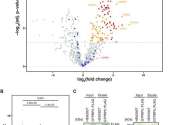How stress hormones guide bacteria in their host
In humans and animals, catecholamines such as epinephrine, norepinephrine, and dopamine are common stress hormones. Stress can increase the body's susceptibility to bacterial infections. In the laboratory, stress hormones ...









